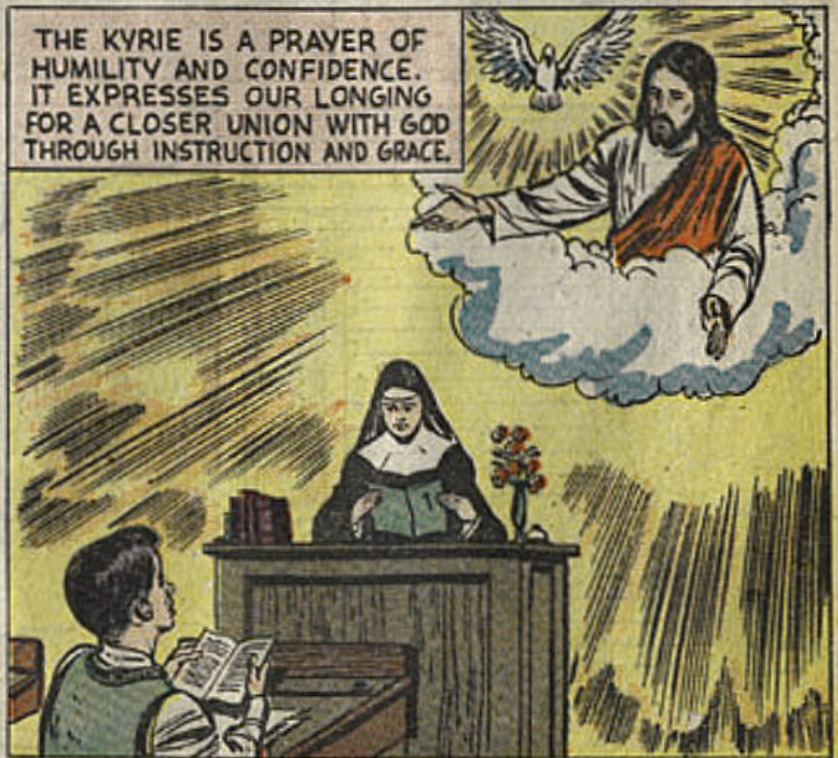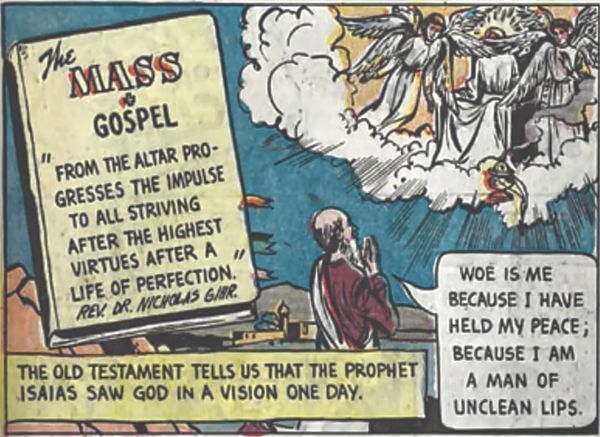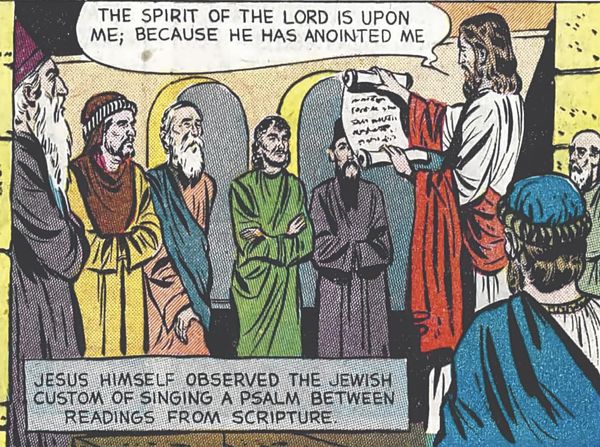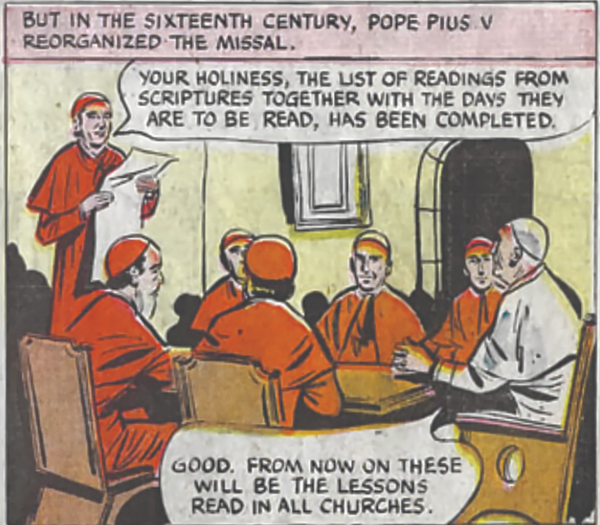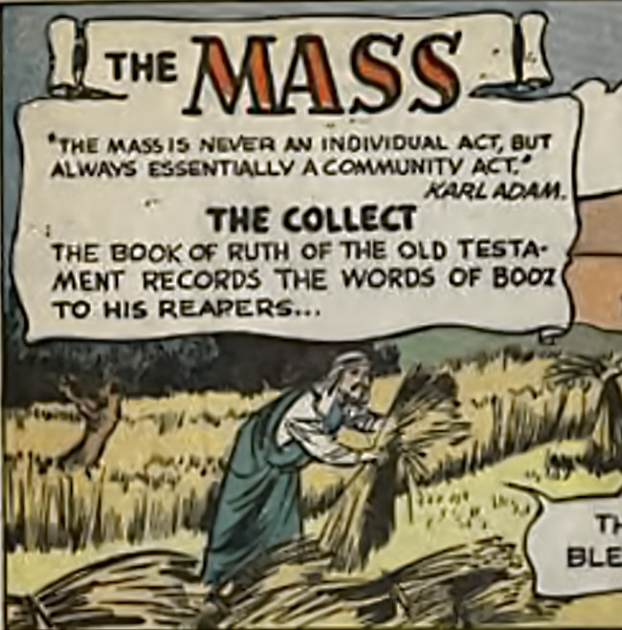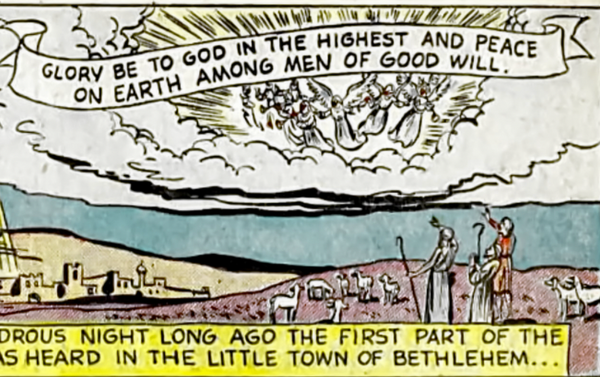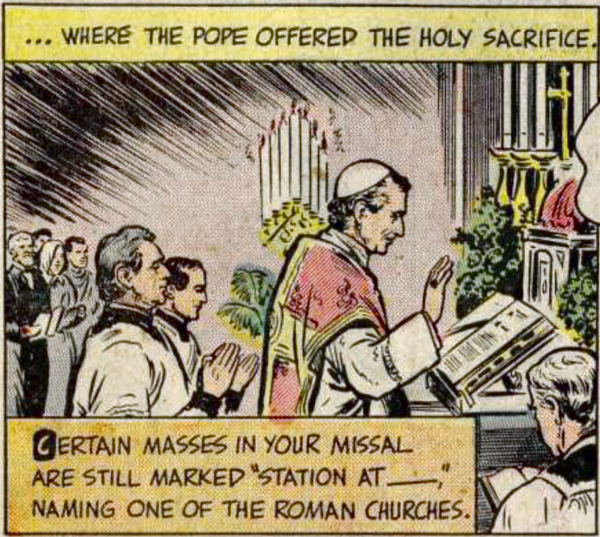Table of Contents
Historical Context
These are pages from Treasure Chest of Fun and Fact, which was a bi-monthly, school-year magazine by the Catechetical Guild Educational Society that ran from 1946 to 1972. Treasure Chest featured stories for Catholics that included religious subjects, American history, crossword puzzles, funny comics, and original fiction stories (including their longest running series, Chuck White). The magazine was only sold on a subscription basis to Catholic schools and was not featured on newsstands, which was the common way to sell comic magazines at the time.
Comic Video
Full Comic Page
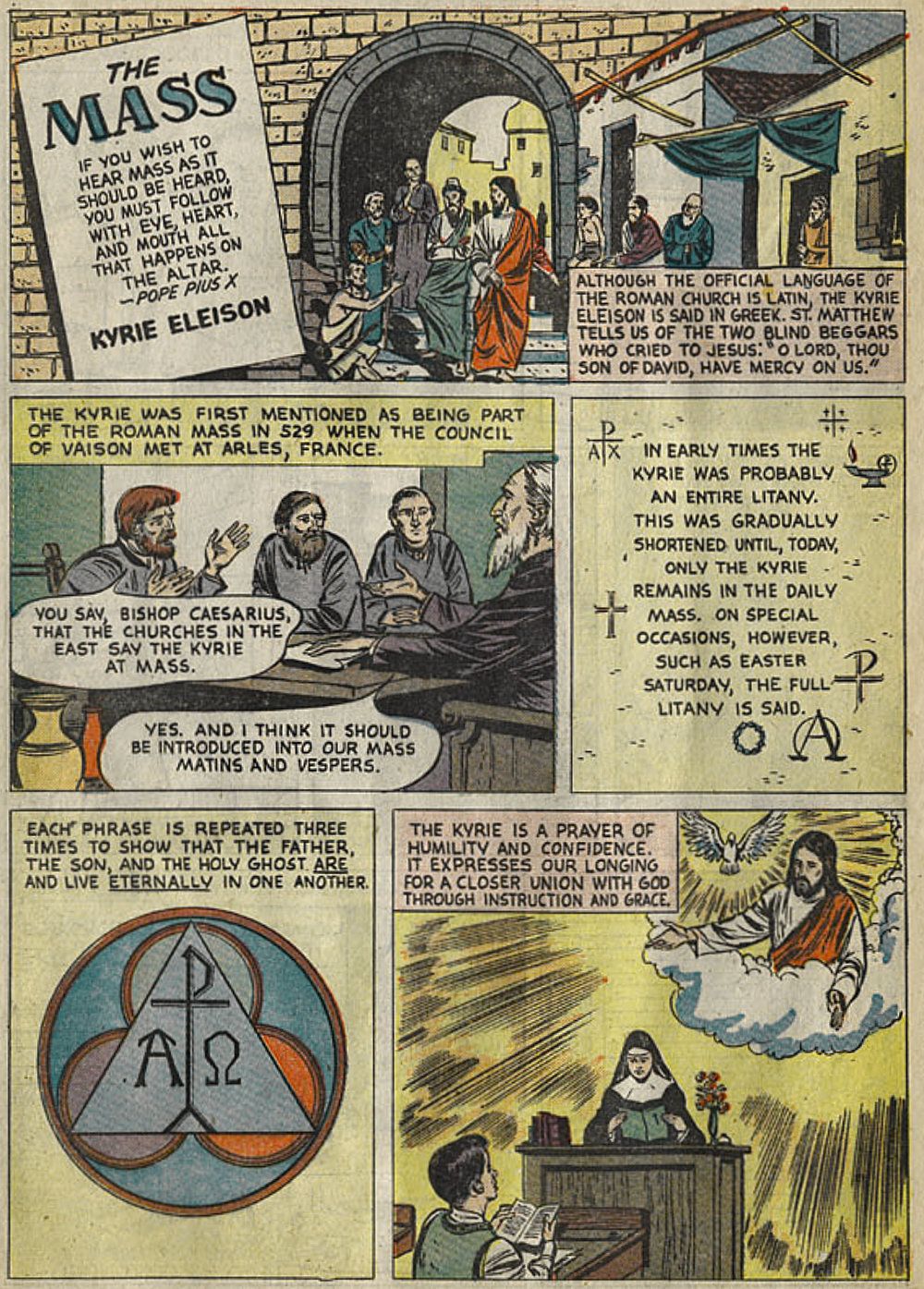
Comic Panel View
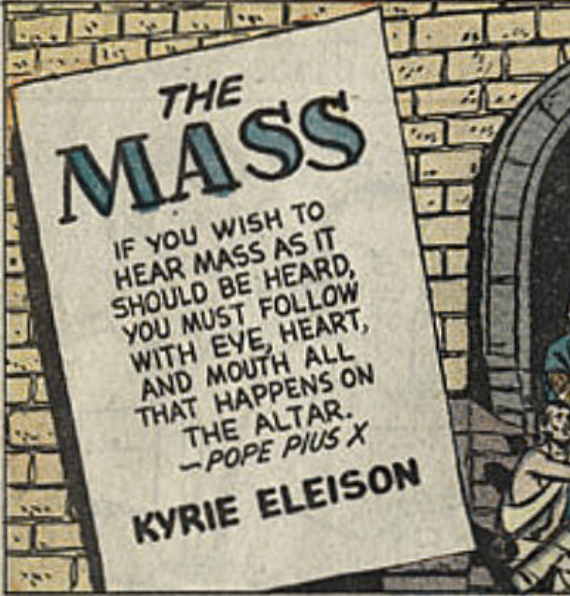
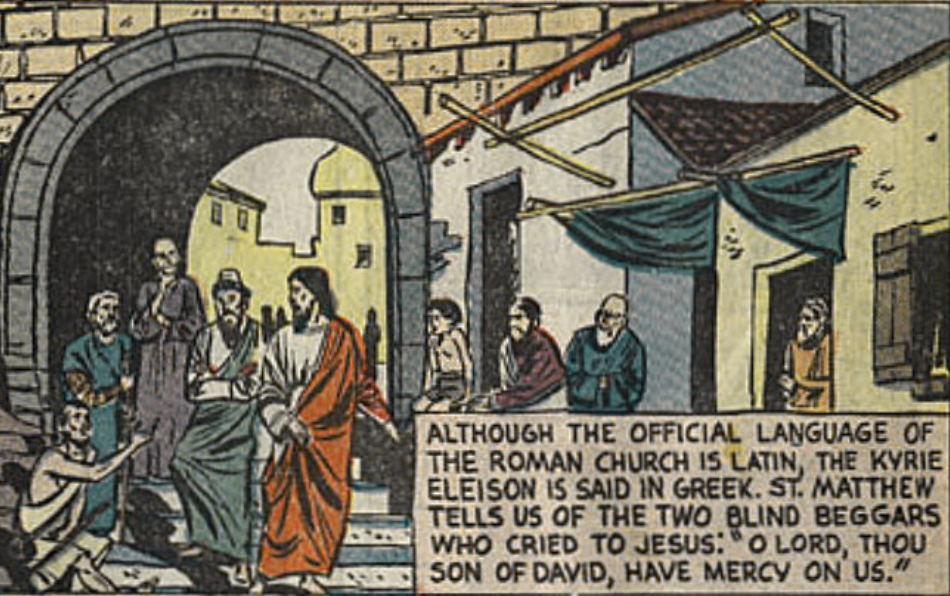
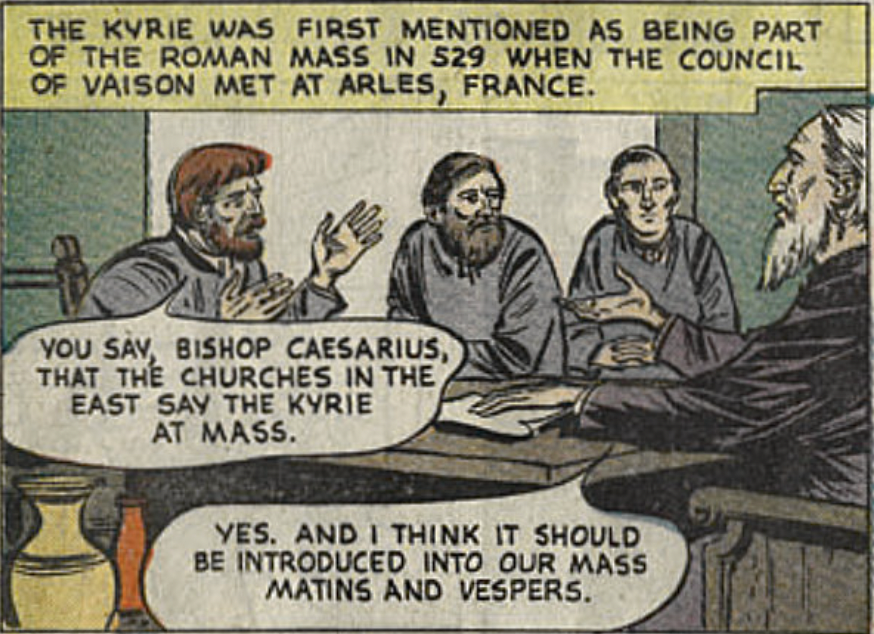
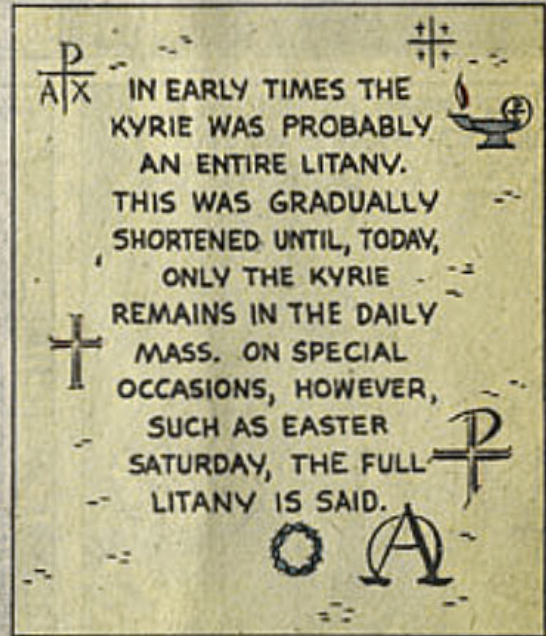
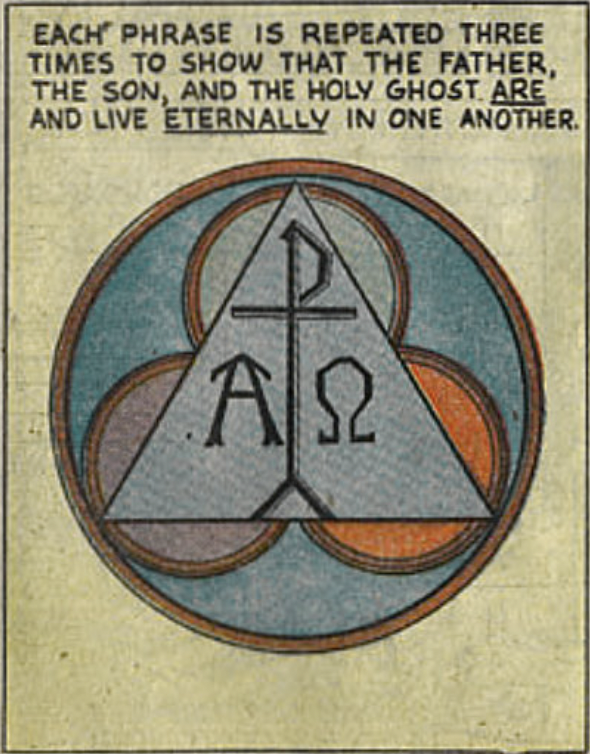
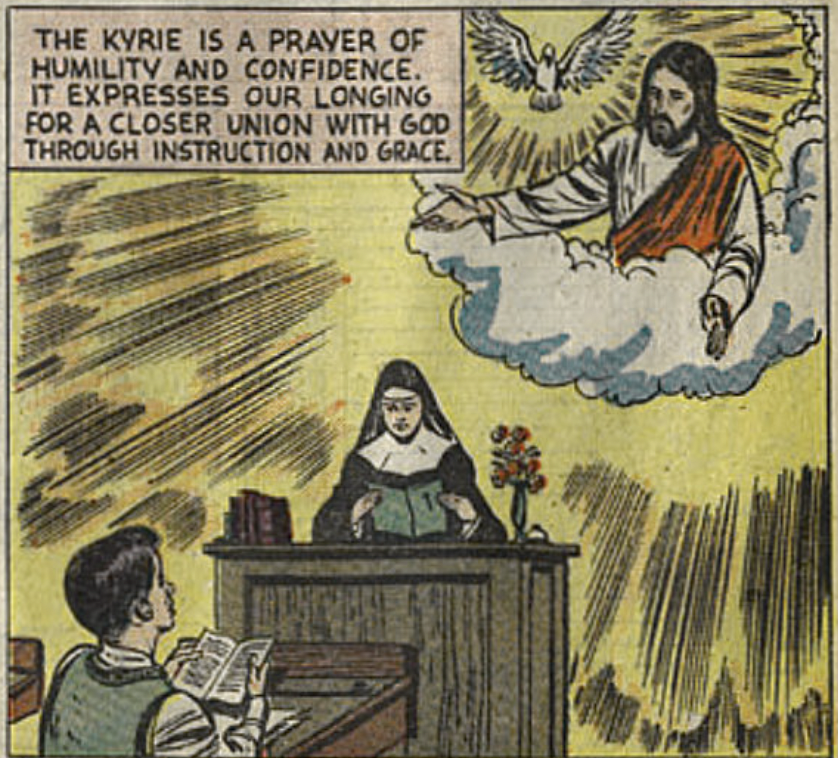
The Kyrie
S. Kýrie, eléison.
M. Kýrie, eléison.
S. Kýrie, eléison.
M. Christe, eléison.
S. Christe, eléison.
M. Christe, eléison.
S. Kýrie, eléison.
M. Kýrie, eléison.
S. Kýrie, eléison.
This site is a place where public domain paintings, stock photos, and coloring pages are stored, categorized, and made searchable. Anyone can come here and use the category page in the menu or the search bar to find the perfect Catholic image for their project. Did I mention that all the images are free and creative commons? That means that you won't have to worry about copyright issues or stock photo fees.

